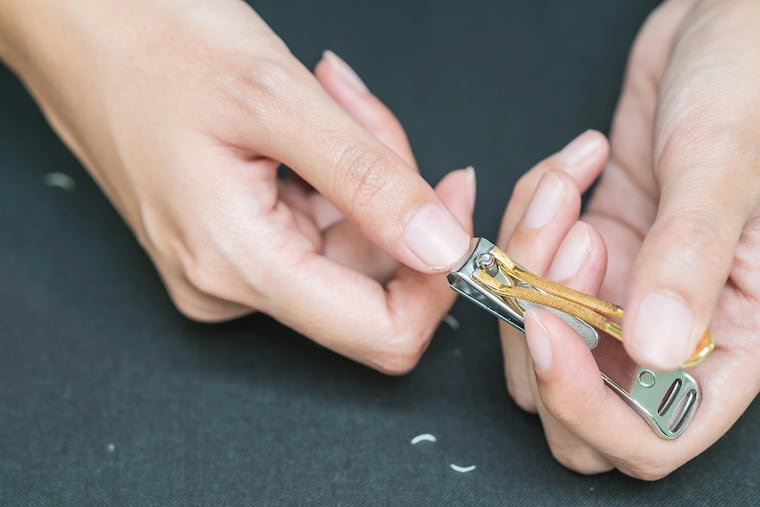How even your fingernails and toenails change as you age
Thin, brittle, splitting nails are among the consequences of getting older. Dermatologists said there are things you can do to make things better.

You expected the wrinkles and gray hair. Maybe you were ready for some age spots and a few achy joints.
But who knew your fingernails peaked at 25?
Yes, even your fingernails and toenails are aging.
Dermatologists say their older patients often arrive with questions about why their nails are getting thin and brittle, why they split, why they have vertical ridges.
Naomi Lawrence, head of the division of dermatology at Cooper University Health Care, has a jarring, one-word answer: atrophy.
"Everything atrophies, unfortunately," she said. As a result, the nail plate thins and grows more slowly.
"Once you hit 25, it's all downhill as far as the growth rate," she added. At their peak, nails grow only 3 millimeters a month. The rate declines after that by 0.5 percent per year. Slower growth means longer exposure to the environment and trauma, which can affect nail quality and color.
Lawrence, who has thin nails herself, said many women start noticing changes in their nails in their 40s. Men, who have slightly thicker nails to begin with, may also have problems, but women "care more," she said.
Gopal Patel, a partner with Aesthetic Dermatology Associates, a private practice in Media and Paoli that is affiliated with Main Line Health, said brittle nails — the technical term is onychorrhexis — affects 20 to 30 percent of the population. Usually, they are normal. The bonds between keratin filaments within nails weaken as we age, he said. Women have weaker bonds than men to begin with. The changes make nails dryer and more brittle.
Toenails are a little more complicated. Sometimes they get thinner with age. Sometimes they get thicker. Older people's toenails are also more susceptible to fungal infections.
Thinning is not a problem you can cure, but Lawrence and Patel do have some suggestions for patients.
Lawrence is a proponent of "gentle handling." If possible, wear gloves when you work with cleaning supplies. Don't let manicurists clean too vigorously under the nail because the nail bed gets more fragile with age. Don't push the cuticle back from the nail either. "That seal is very important to protect your nail from bacteria or fungus," Lawrence said. "I know it doesn't look as good, and my manicurist still thinks I'm weird."
>>READ MORE: Five anti-aging benefits of exercise
Nail polish remover is particularly tough on nails, so try to limit exposure. Acetone, a common ingredient, is especially drying. Lawrence said she's tried brands without acetone, though, and hasn't been impressed with how well they worked.
She also said you should make sure you're eating enough protein.
Patel said good moisturizing can help. He suggests starting with a product that contains lactic acid or urea and following that with a thicker cream. Most of the nail is dead. Any treatments need to focus on the part that's growing, so it takes a long time to see changes.
Patients often ask Patel about biotin. He said the science supporting its use is limited, although some patients have told him it helped them. He has become more concerned about recommending it since the FDA announced last year that biotin supplementation can lead to incorrect lab test results.
Brittle nails are a first-world problem for sure. Lawrence and Patel said there are other nail issues that truly are signs that something is medically awry. Their biggest concern is cancer. Melanoma, the most dangerous skin cancer, and squamous cell cancer can hide under nails. Melanoma may be noticeable as a dark spot or streak under a nail. This is not to be ignored. If your nail is lifting and pulling away from the skin in a certain spot, that also should be seen by a professional.